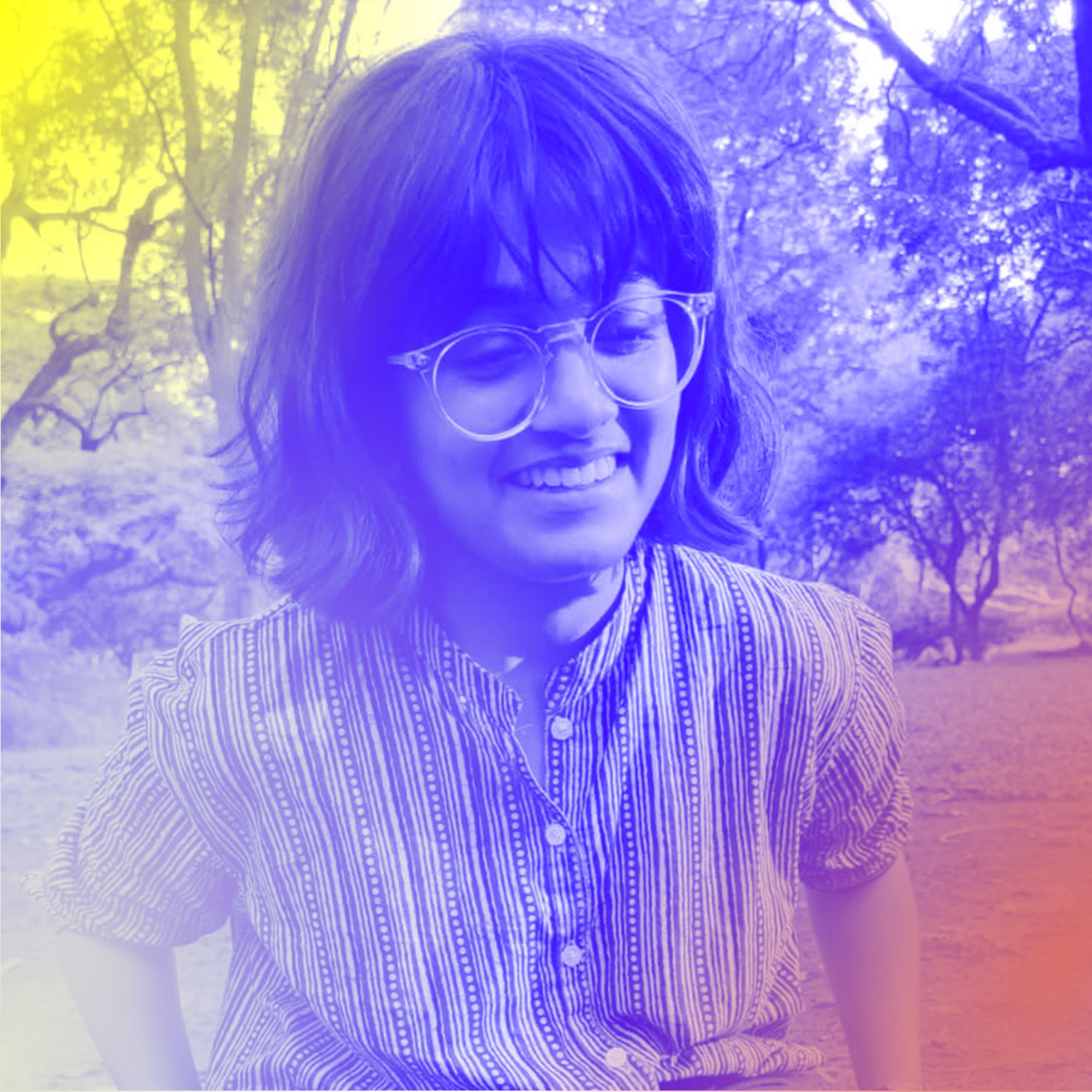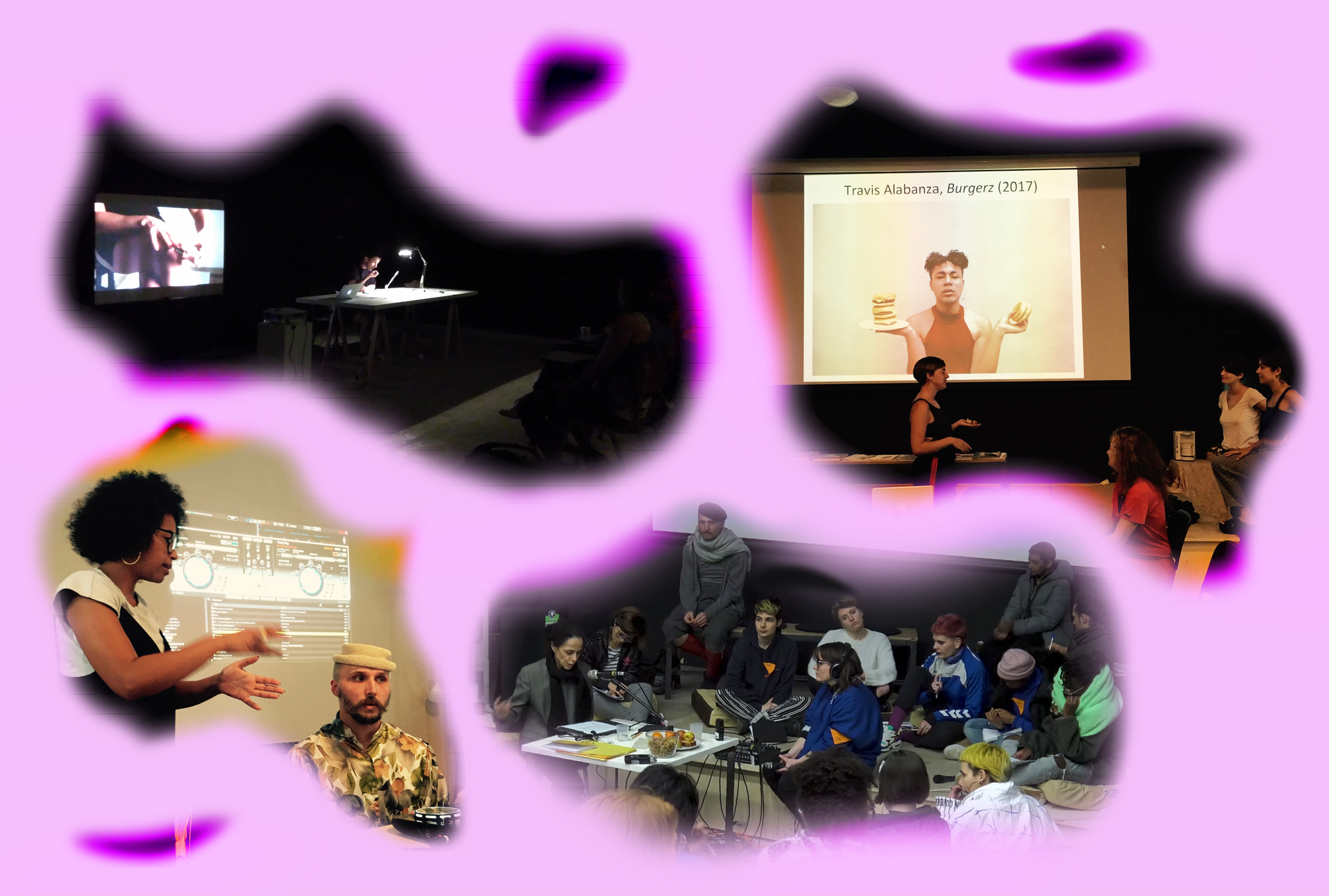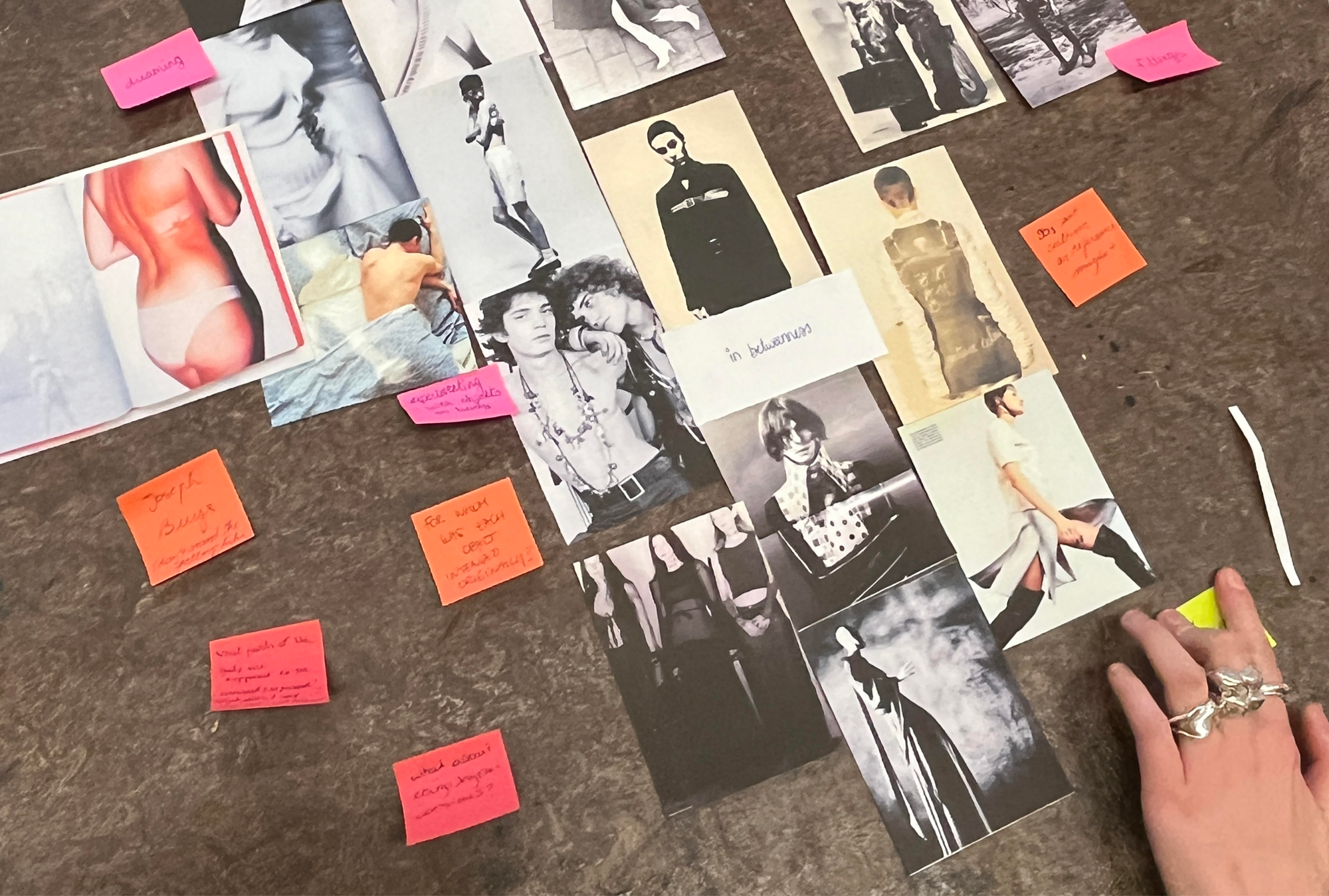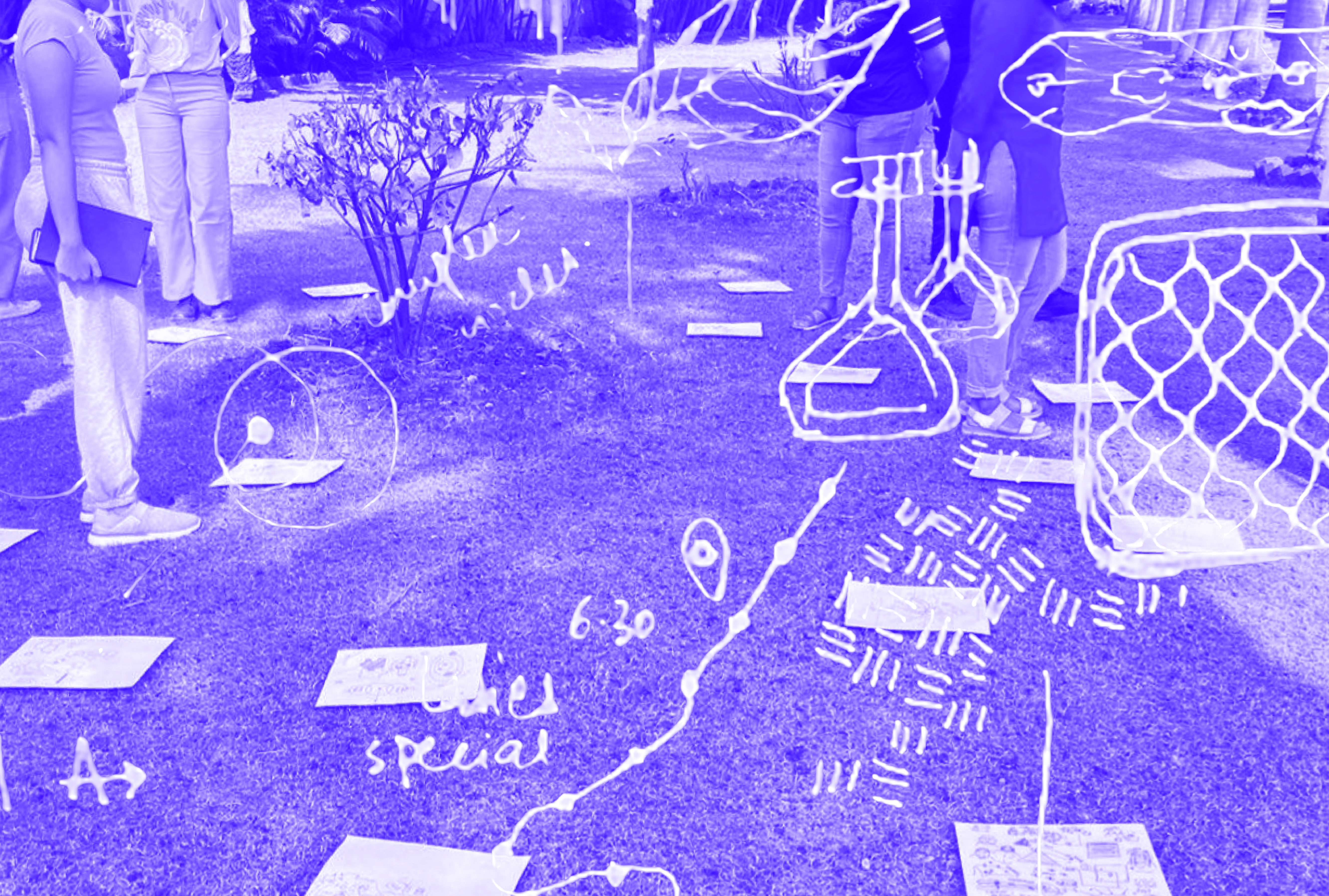
One year after graduating, I enter my alma mater again—this time as a teacher. The MIT Institute of Design in Pune, the western Indian state of Maharashtra, is a private school founded in 2006. Excited, nervous, and concerned, I introduce myself to the communication graphic design student cohort. But how can I, as a cis-gendered woman who benefits from caste privilege, shift power to knowledge holders of anti-caste pedagogies? What pedagogical exercises can plant seeds of curiosity and criticality in a predominantly homogenous-elite community? Lastly, how can we—especially those of us from dominant and oppressive backgrounds—engage design students in processes of change that address structural inequalities?
As I enter the campus, large posters—“#BreakTheColonialMindset” and “Empower Women for Participatory Democracy” with images of white men—catch my attention. Old Hindu symbols of om and the swastika embedded in the building’s architecture are constant reminders that even though the preamble of the Indian constitution stipulates fraternity “without distinction of caste, class or creed, so as to assure the dignity of every individual and the unity of the Nation”—as appealed by anti-caste jurist Dr. Ambedkar in the Constitution’s Drafting Committee and the Constitutional Assembly Debates—India’s educational institutions still privilege Hinduism over other communities. Furthermore, design schools, in particular, operate on the premise of so-called design neutrality, while reproducing casteism and casteist cultural hegemony.
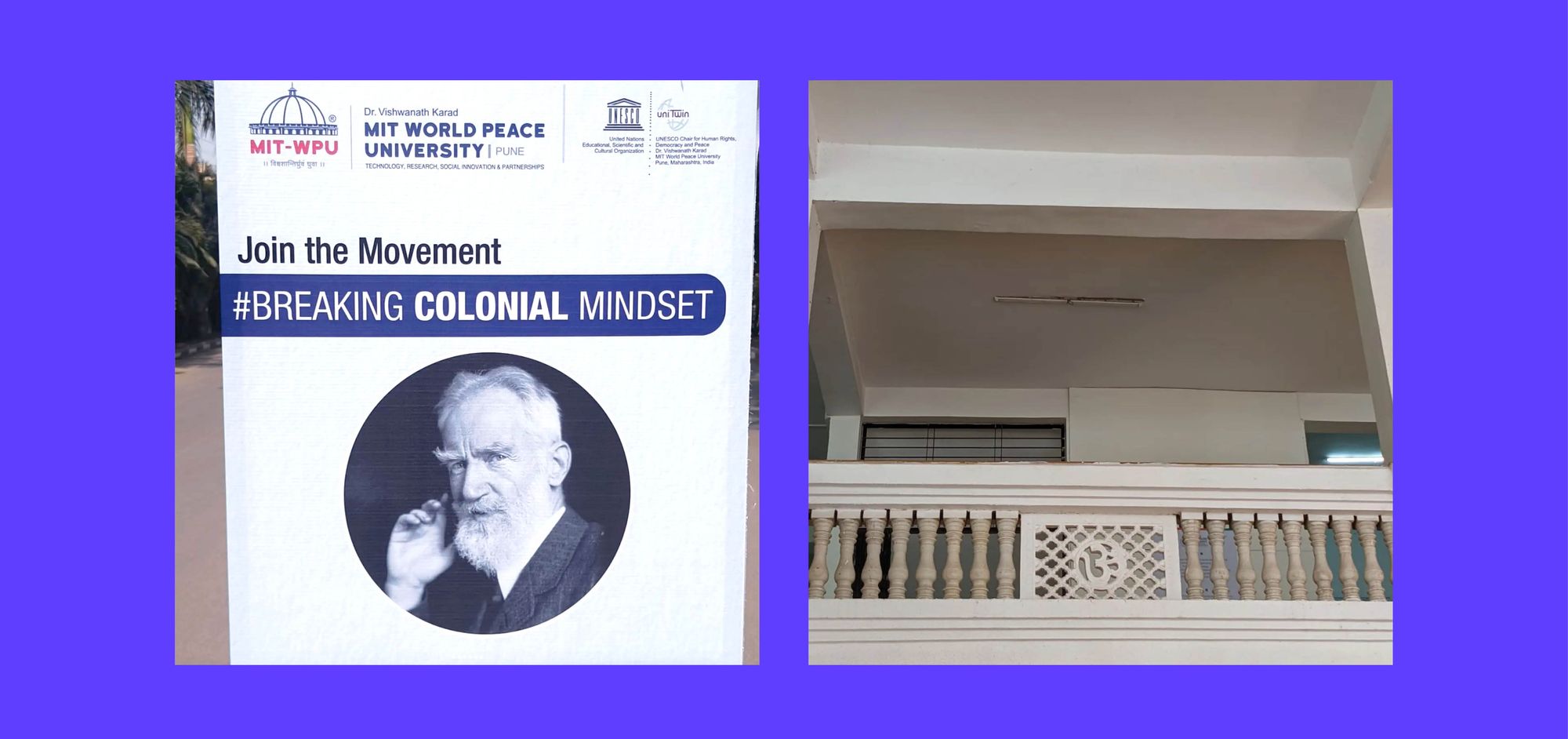
Tainted academies
In sixth grade, I was taught that, after years of British colonization, sovereign India became a democratic, secular, egalitarian republic. Referring to the caste abolition of 1950 stipulated by the constitution, my Social Sciences teacher used the past tense: “So we reached equality,” she stated, and never discussed the topic again. However, the over 3000-year-old caste system still affects all aspects of life, resulting in the continued exploitation, erasure, and invisibilization of entire communities, their knowledge systems, languages, and lived experiences.
Over the last seven years, far-right ideologues in India have reappropriated the narrative of decolonization to further their Hindu supremacist ideologies. One of these is Hindutva, a militant nationalist populism that perpetuates religious, casteist, racist, and gender-based oppression. Since Prime Minister Narendra Modi’s right-wing government came into power in 2014, the country has witnessed a rise in Hindu nationalist vigilante-led sedition cases, hate crimes, atrocities, and institutionalized violence against Muslims, Dalit, Bahujan, and Adivasi communities. Notably, 91% of the hate crimes recorded in the last decade happened after Modi came to power, which reflects the government’s responsibility for inciting violence.
“In the midst of the rising nationalist oppressive voices, the design community chooses to remain primarily apolitical and silent.”
In the midst of the rising nationalist oppressive voices, the design community chooses to remain primarily apolitical and silent. From the access to the knowledge that design exists as a field of higher education, to application processes, administration, recruitment, and pedagogical approaches, design education in India structurally upholds its oppressive status quo. Since its onset in the 1960s, the Indian design education model has predominantly rewarded either the mirroring of “superior” Western standards of design, or the appropriation of indigenous arts and crafts of the country, all while still being strongly influenced by Hindu nationalism. However, while the colonial structures of design pedagogy need to be addressed, an imminent threat comes from prematurely closing the question of what decolonization could be.
The first National Institute of Design (NID) was founded in 1961 in Ahmedabad and supported by the government and Ahmedabad Local Corporation, aiming to serve the industrialization of the national economy. However, the Ford Foundation, the largest private U.S. philanthropic foundation of the Cold War era, funded all foreign exchange costs in NID’s early years as a part of their “modernization” project and imperialist work in the majority world. In addition, to support programs of the government of India, the foundation initiated institutional recommendations authored by experts from Europe and the U.S.A. It also financed the study tour upon which U.S. designers Charles and Ray Eames’ 1958 report “India Design Report,” the philosophical founding stone of NID, was based. In a social media post, illustrator and design researcher @thebigfatbao points out that the report, which is often considered “the Holy Grail of Indian design,” quotes the Bhagavad Gita, an inherently discriminatory Hindu cripture, and therefore it “is nothing but a casteist document.”
“While many anti-caste designers point to the oppressive structures of Indian design institutions, we—savarna (oppressor caste Hindus) designers, academics, and practitioners—are oblivious to the casteist nature of design in the country.”
While many anti-caste designers point to the oppressive structures of Indian design institutions, we—savarna (oppressor caste Hindus) designers, academics, and practitioners—are oblivious to the casteist nature of design in the country. In our attempts to “decolonize design education” to counter Eurocentrism, we continue to move forward by consistently centering casteist ideologies and cultures in our institutions, failing to question our own positionality and compliance in upholding and perpetuating the casteist ideas of untouchability, purity, and perfectionism.
Among over 1900 design colleges in India, only 250 are public, so most available seats are at private institutes with a hefty price tag. Also, around 65% of private institutes offering undergraduate courses charge a total tuition fee greater than INR 5,00,000 annually for a four-year course; meanwhile, the average annual wage is INR 3,93,600. Unlike public design schools in the country, private universities don’t offer affirmative action in the form of reservations for the oppressed castes of Dalit, Bahujan, and Adivasi, the Indigenous people of South Asian communities.
MIT Institute of Design, like other private institutions and workplaces, does not implement affirmative action in its admission/hiring process, so it is impossible to confirm if there are any Dalit, Bahujan, or Adivasi lecturers at all. However, based on the last names featured on the website, it seems that at least 33% of department heads are Brahmins. The latest data shows the discrepancy of this overrepresentation with India’s demographics, where Brahmins form merely 4% of the population. The deliberate lack of systematic research on issues of diversity and representation of the marginalized majority in design faculty and students in India—as well as the bare existence of published articles on critical design pedagogy—highlights the apathy of design institutions in dealing with decolonizing their staff, course content, and ways of teaching.
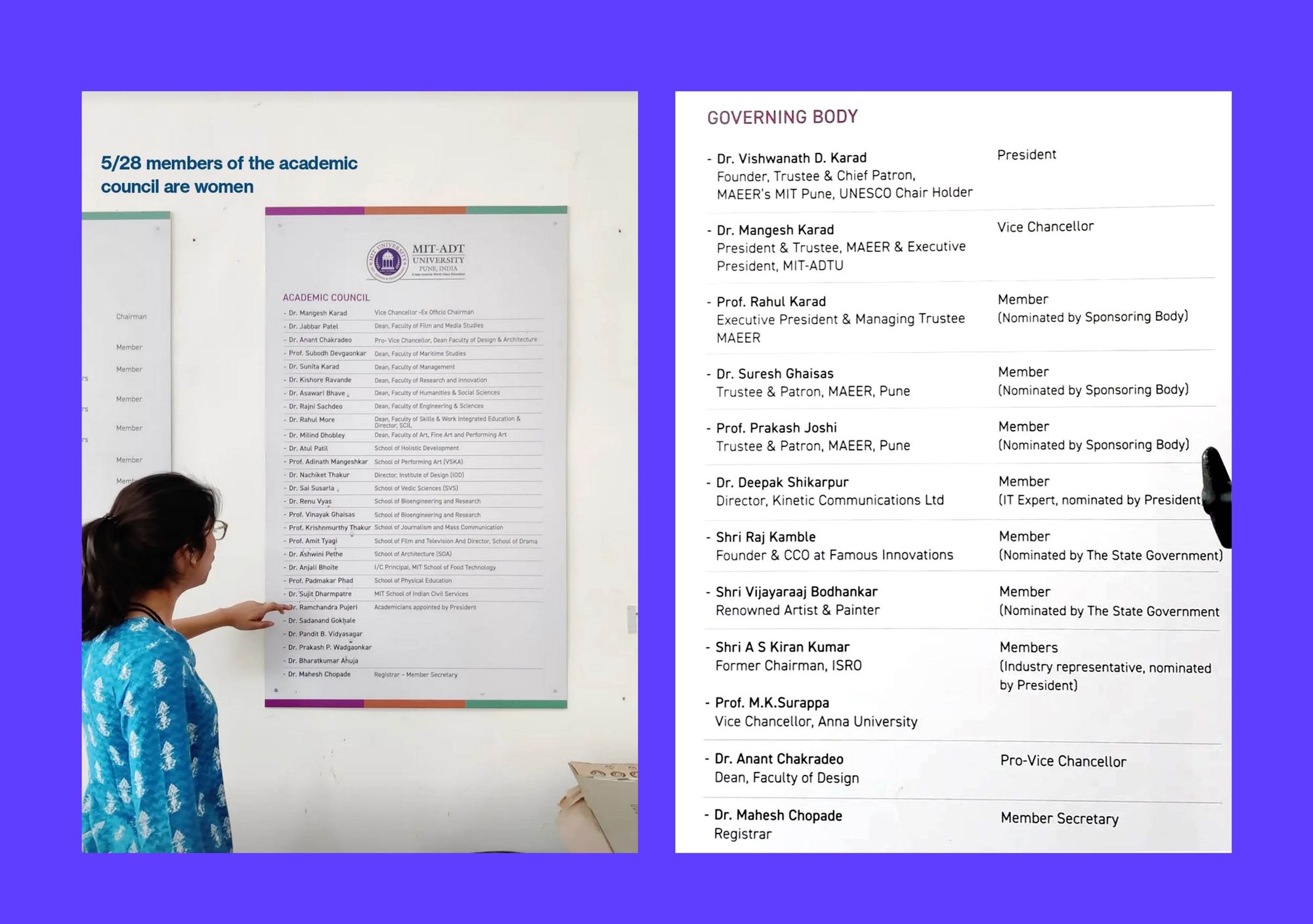
The design curriculum in the country further reinforces the status quo, erasing Dalit, Bajuan and Adivasi knowledges and cultures by mechanisms of appropriation under the guise of “traditionally Indian.” Therefore the cycle of eliminating the “other” and maintaining Brahmanism continues. An example is “Inter-Design Studies,” an “environment exposure” course for first-year students taught in different design schools under altered names. During my studies, the course involved multiple visits to nearby villages to “observe and document” the lifestyles and struggles of the residents of rural areas. This exercise is disturbingly borrowed from colonial anthropological practices, whereby rural people are depicted as “primitive,” “ancient,” or “exotic,” and the design student is an “objective observer” and a “problem-solving savior.” The latter part included lectures drawing on casteist Hindu texts—specifically the Vedas—to define the ancient Indian roots of aesthetics and design, all in the name of “decolonial politics.”
Similarly, design courses, such as “Craft Documentation” and “Environment Perception,” propagate oppressive practices and ideologies at the National Institute of Design. Bahujan researcher Yatharth (@strangerobot) explains the realities of these classes: “What is often alluded to as a savior of crafts heritage/knowledge in India is marred with issues of casteist gaze, blatant appropriation, intellectual property theft, and gatekeeping of knowledge.”
On top of these problematic educational methods, the design curriculum in the country follows a strictly market-driven and commercial approach. None of several institutional reports on design education in India perceive the field as a critical, social, and political practice. The only prospects to which design education should respond, as stated in the 2016 report by Indian design universities and the Indian Design Council, are the “huge demand from the market for professionally run design companies, as well as professionally trained designers.”
Unlearning hegemonic design pedagogy
One approach to challenge these hegemonic design pedagogies is to form plural understandings of decoloniality that emerge from different historical, cultural, and social contexts and experiences. In “Design’s Missing Others and Their Incommensurate Worlds,” (2020), Ahmed Ansari analyzes what decolonization could mean in the Indian subcontinent today. He challenges the language of decolonization by situating it locally, posing the question: which other relations matter more than the binary of indigenous/settler and coloniality/modernity? To rethink the design discipline, we must expand its definition by shifting its narratives and centering community-led resistance that white, savarna, and male-centric design have consistently “othered.” Echoing Ansari, decolonization cannot simply revolve around delinking from Eurocentrism. Instead, it must detach from “local elitism, local hegemony, and their projects of epistemological colonization.”
During my studies, I experienced a profound lack of BIPOC scholars or anti-caste thinkers. Similar to my primary school experience, dominant education continued to render caste-supremacy invisible. Eager to learn how to break the silence around caste, I sought education outside the academy and enrolled at the Unlearning Caste Supremacy Workshop, an intensive four-week online workshop conducted by Equality Labs, a Dalit civil rights organization founded by Dalit feminist scholar Thenmozhi Soundararajan. The organization dedicates its work to ending caste apartheid, gender-based violence, Islamophobia, white supremacy, and Hindu religious intolerance. Their programs are particularly designed for people from oppressive caste backgrounds to understand the expansive history of casteism and anti-caste resistance, and become allies toward true caste abolition. The savarna facilitators, themselves graduates of the program, created a space of kindness, care, and healing. This workshop gave me the language to understand and identify somatic indicators of caste stress and savarna fragility (the “faux outrage to hide structural privilege,” as Soundararajan defines it) and to nurture and learn from that discomfort. During the four weeks, we mapped our caste lineages and other introspective exercises on our positionality as a way to reveal how we carry and proliferate suffering through our work and ways of being. It left me pondering how to include these approaches in design education.
Exercises to counter oppressive systems of thinking
Back in Pune, I’m about to give my workshop as a part of a longer course titled “Systems Thinking.” The course demands learning classical ways to map systems, like post offices or waste management systems. However, my goals are simply to engage the classroom in reflecting upon and discussing identities, pluralities, and design’s role in the systemic propagation of oppression. But as soon as I enter the classroom, I realize these goals seem unattainable. I’m reminded of my years here, where simple skills like dialoguing, reflecting, and critiquing without producing any tangible outcomes were not honed or valued, and were often dismissed.
At MITID, for example, you can finish the entire degree course without ever showing your work to your peers. At the beginning of the semester, students receive assignments and work alone in the studios. Every week, they form lines in front of their mentor’s office for one-to-one feedback sessions. As a sole judge, the mentor determines what constitutes good and bad design for a group of fifty-five students, and at the end of the semester, a panel of four people reviews the objects you produced to evaluate your learnings. This pedagogy leads to students fearing to speak up and formulate their own opinions.
“Unlearning or even identifying casteism takes time and continuous work. [...] I wonder what topic can plant seeds of criticality for the students to identify with.”
Above all, the group that I am about to teach, like me, comes from predominantly privileged backgrounds. Unlearning or even identifying casteism takes time and continuous work, and my workshop lasts only a week. Acknowledging the school’s structural lack of discussion culture and critical readings, I wonder what topic can plant seeds of criticality for the students to identify with, and also take inspiration from young fellow educators with whom I’m in conversation to draw up a course structure.
Inspired by the idea that drawing is a “practice of liberation that questions hierarchies between formal and informal knowledge,” as explored in Benedetta Crippa’s book World of Desire, I ask the class to work on a small drawing to reflect on the space they are in, who they do or don’t relate to, who they feel comfortable with vs. who they don’t, where they come from, and where they aspire to be.
I ask them not to write their names, so we can collectively look at the drawings to see the similarities, differences, and connections in our expressions with objectivity, criticality, and, more importantly, with care. This is the first step towards making them aware of the homogeneity in the spaces they occupy, and we continue doing exercises like this in different capacities over the rest of the week.
“Reflecting on their experiences within institutional hierarchies creates a better understanding of spaces where they are oppressors themselves.”
On the first day, I play “Designing Against Oppression,” a talk by Frederick van Amstel introducing Álvaro Vieira Pinto, Paulo Freire, and Augusto Boal’s systemic perspective on oppression based on Frantz Fanon. The students huddle around to listen to how this perspective frames oppression as a contradiction that builds tension between different social groups. With my computer’s low volume, and topics previously unheard of, they feel lost. However, while sharing their takeaways with each other, a fruitful discussion over the term “oppression” and its repetition in the talk unfolds. To familiarize them with its context, I ask them to share stories of their frustrations as students—their lack of agency and voice within the institution. Reflecting on their experiences within institutional hierarchies creates a better understanding of spaces where they are oppressors themselves. Openly discussing anger and helplessness in facing their own situatedness within caste-based violence, I point out how shared inquiry or learning together can be a way of reclaiming power for others—a step towards solidarity organizing, and critical thought.
Throughout the week, we highlight podcasts, movies, and books from marginalized perspectives. After every exercise or study material, I give the students two reflective prompts to initiate a discussion: “What did this make you feel?” and “What are your thoughts about it?” which aim to help them articulate their feelings separately from their opinions.
We discuss stereotypes, biases, and universal narratives woven by those in power—oppressors—about those with less power. Following this, students reflect on situations when they were either made to believe a “one-sided” story about a community they held power over, or were themselves at the receiving end of stereotypical comments that disregarded their intersectional personalities.
At this point, I exhibit their expressive drawing sheets from the first day, where they had doodled their identities, the communities, and ideas they related to. To their shock, they notice how similar a lot of their symbolic drawings were—how their visualizations of the world map look the same, how all of them draw money with a US dollar sign on it (even when we use the Indian Rupee or ₹). We engage in long discussions about how our homogenous education, background, language of communication, and media consumption have distorted our understanding of our realities.
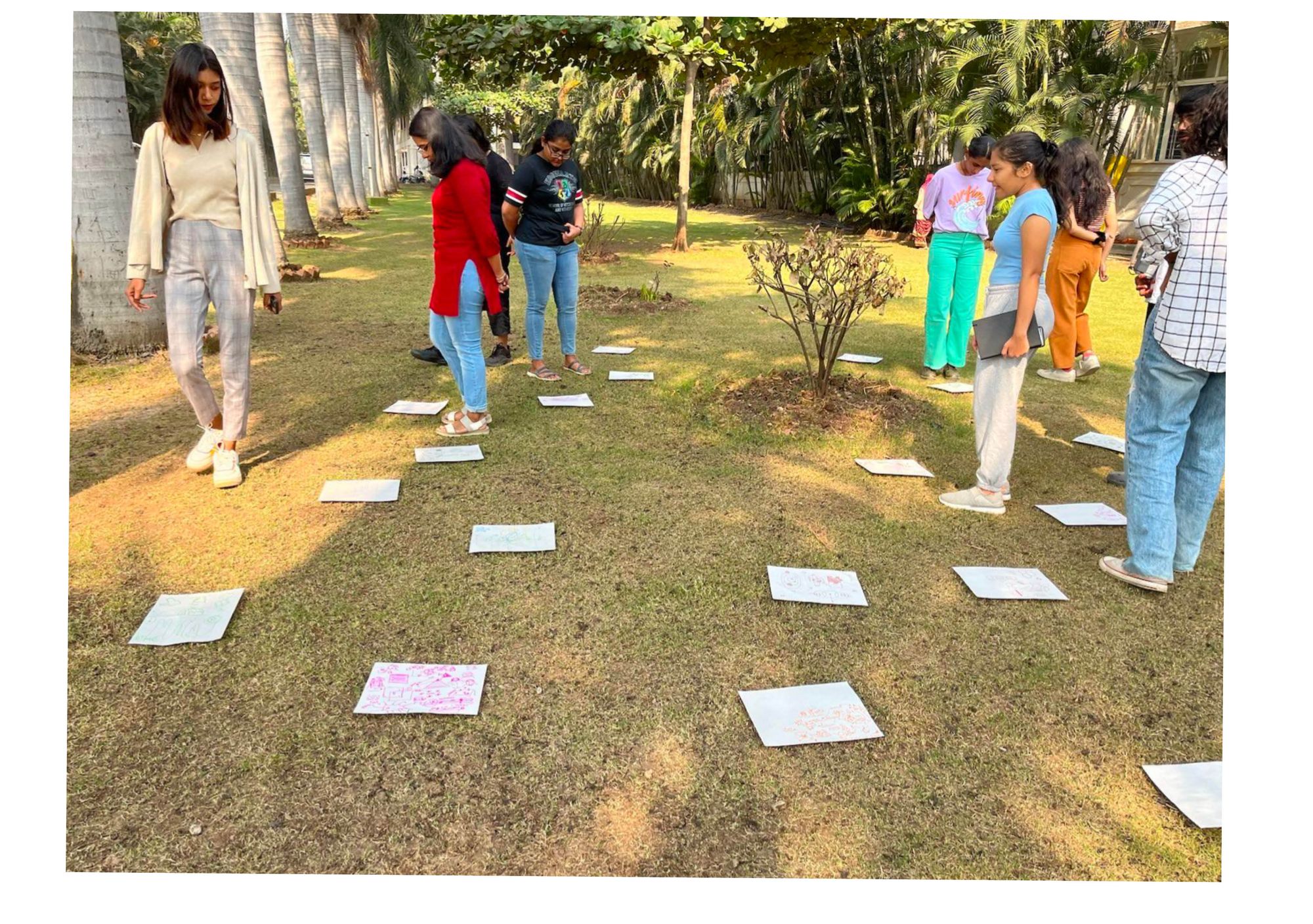
I pair the under-the-sun experience with somatic exercises that we did each morning. Many of these exercises are borrowed from literature by Black feminists, activists, and healers like adrienne maree brown, and from books like My Grandmother’s Hands: Racialized Trauma and the Pathway to Mending Our Hearts and Bodies by Resmaa Menakem, which discusses a body-centered understanding of oppression. These actions prepare our bodies and minds for uncomfortable conversations that we engage in during the day, and give us the tools to deal with our bodies’ defense mechanisms facilitated by our inherent insecurities and savarna fragilities.
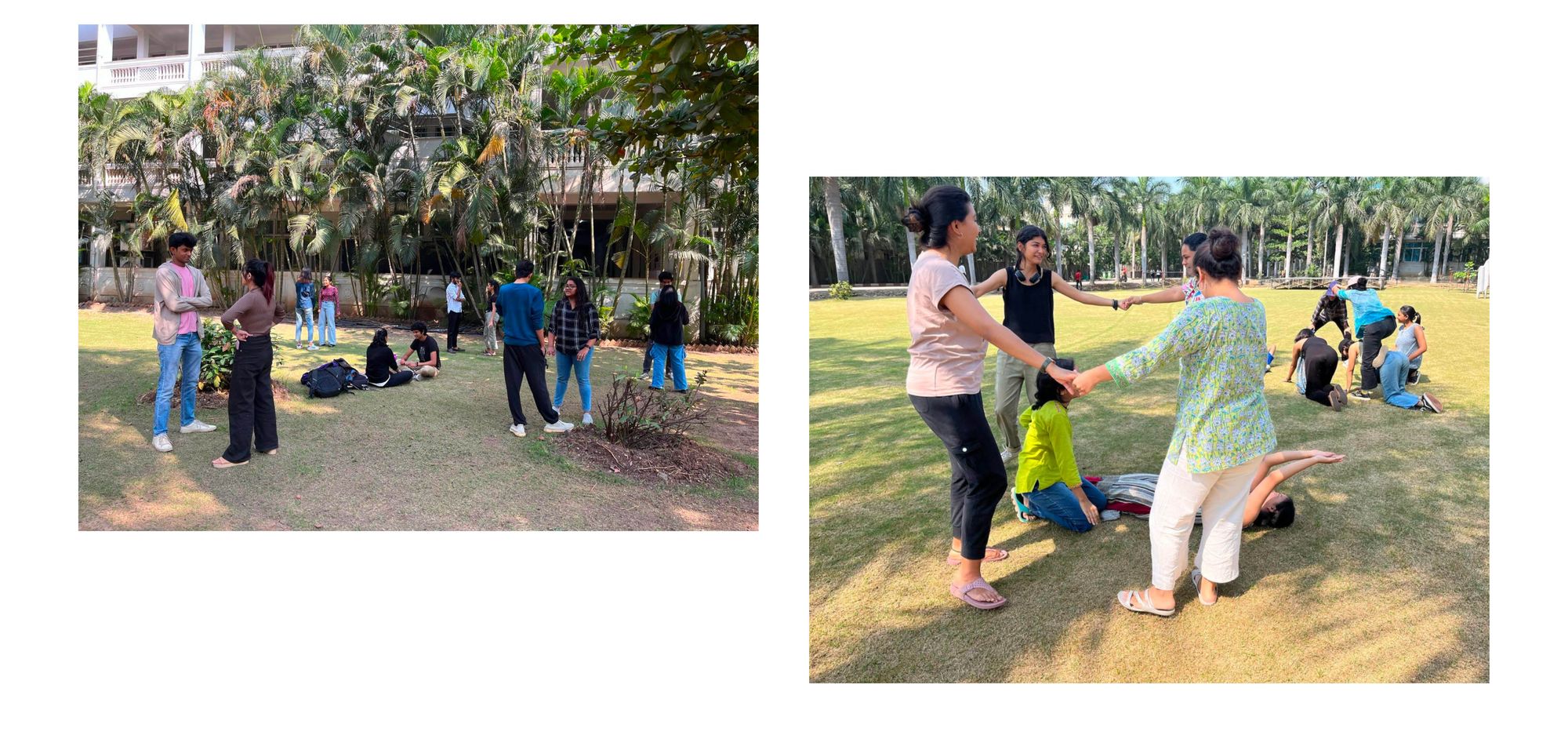
Over the next few days, I shift gears and bring in ideas and people from communities who are not seen in a Hindi-speaking, Hindu, Brahminical, patriarchal institution like MITID, to forefront realities that remain invisible to people from spaces of privilege like us. Inspired by a conversation and course structure created by Yatharth, “Critical Futures and Critical Making,” we watch a Tamizh music video on anti-caste resistance by anti-caste folk artist and rapper Arivu. On another day, we interact with Pagel Lepcha, a photographer from the Indigenous community of Lepcha People from the Himalayan state of Sikkim. Both these spaces deem different reactions and learnings. After the first one, students confess that they feel “stunned,” “moved,” “uncomfortable with their own biased thoughts,” or “ignorant” for their obliviousness with names of anti-caste idols mentioned in the song, such as Periyar. Post the interaction with Pagel and his photographs of his home-state and his people, students share how their perceptions of the Himalayan town and their community were challenged by the pluralities and intersections in Pagel’s work and writing.
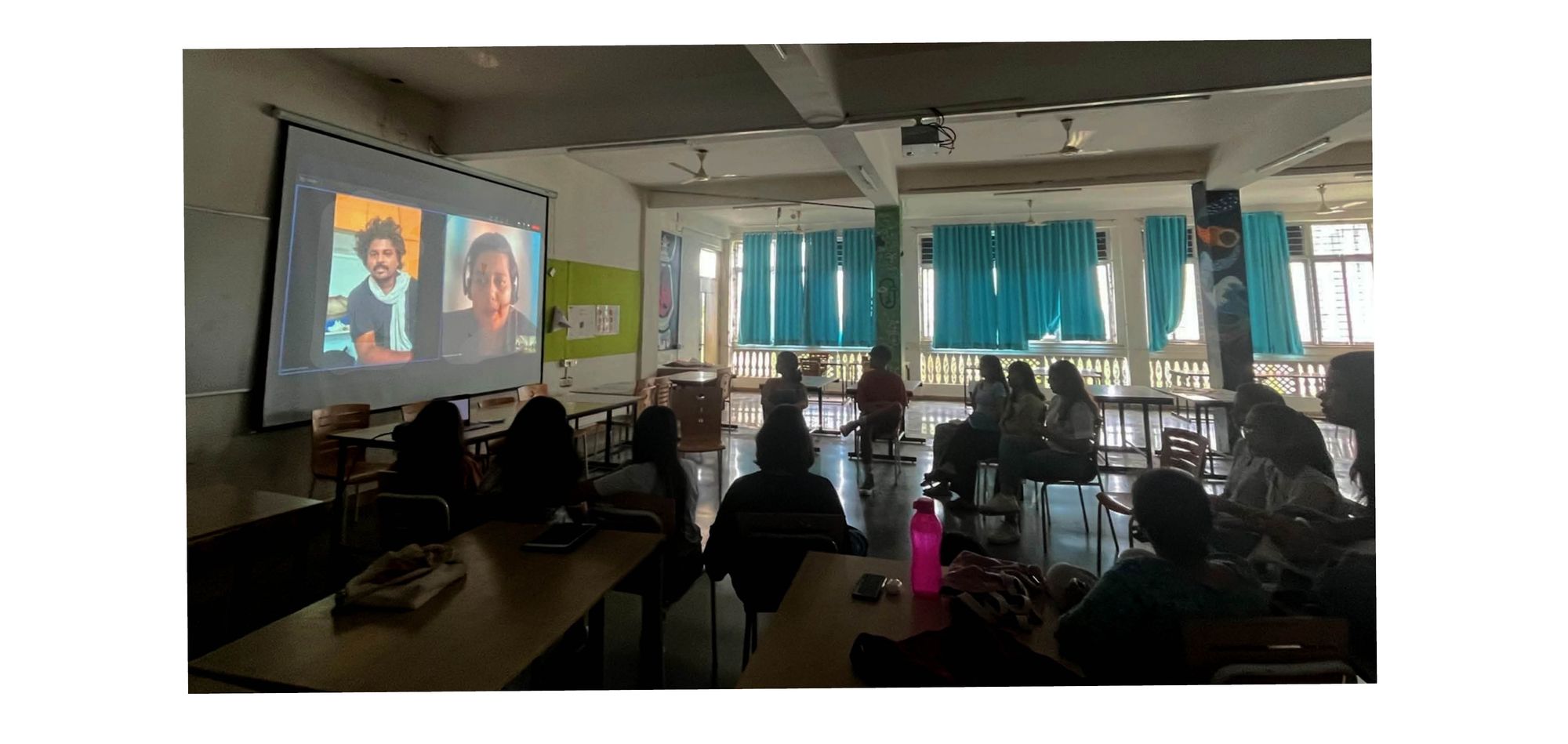
By the third and fourth day of the workshop, we continue the daily self-reflective drawing exercise that maps systems by which their identities are influenced. Many openly talk about their language privileges, their cis-genderedness, their abilities, their caste- and economic locations in classroom conversations.
On the last day, it seems like some of the students take the suggestion to heart by bringing their friends from other disciplines, like User Experience design, to attend the workshop. Our conversations have already continued outside the classroom in their circles. A few days after this workshop, Nikita, one of the students, sends a reflexive piece my way. She writes:
“Today, my horse blinds have tiny perforations through which streams of light illuminate the realities that oppress me as well as realities that allow me to oppress others.”
Through this piece, she attempts to locate her position as a designer in a world where she is at the intersection of many identities. She continues:
“[our blinds are] so deeply embedded, they become invisible, become normal. Blinds whose wounds have dried and the pain forgotten. But, it is time that I pull these blinds off. I experience the pain that I once buried deep inside and see my bloody hands and smell the reeking scent of oppression, and acknowledge what my body has gone through.”
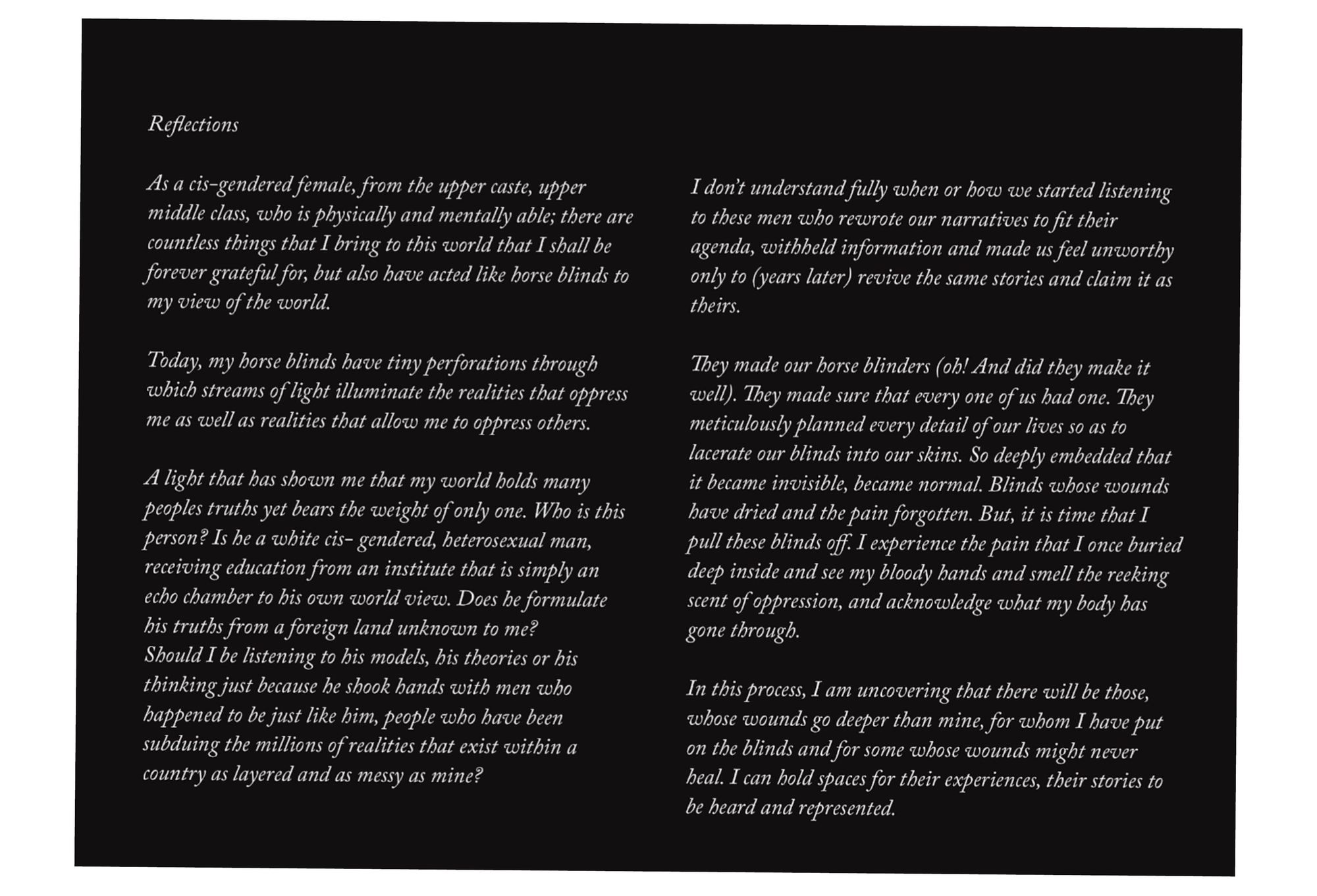
Finally, it’s the last day of class. We start, just like we did each morning, on the lawn with the sun casting palm-tree-shaped shadows on our faces. The last somatic exercise is a little different because all 27 of us sit in a large circle in absolute silence for 15 minutes. Some students sit in restless stillness, some meditate, some lie on the grass and look up at the blue November sky of Pune, and two of them even drift off into a short nap. We break the silence with a debrief on the week and write down our reflections on how each of us feels about questioning our identities, pluralities, and design’s role in the systemic propagation of oppression. The class comes to a close by reading each other’s anonymous reflections.
My thoughts still ponder upon the questions that a group of students—mainly young women—asked me the previous day: “What do we do now that we are aware that we hold all this power in spaces that we occupy? How do we dismantle these systems and support communities that don’t hold this power because of us?” I still don’t have an answer to this. The least I can do, as I’ve learnt from facilitating this workshop as someone from an oppressive caste-location, is to create spaces of care and reflection. As Nikita writes in her reflection:
“In this process, I am uncovering that there will be those, whose wounds go deeper than mine, for whom I have put on the blinds and for some whose wounds might never heal. I can hold spaces for their experiences, their stories to be heard and represented.”
In the past week, I experienced that by exchanging with communities I share identities of power and privilege with, we can find ways together to step back, step down, and make space. Strolling back from the lawn, I wonder how far these short conversations in the classroom can take us. How can we induce any long-term change if all our interventions are one-off, temporary, and only a week long? If design education in the country remains mostly apolitical, are we teachers just well-intentioned servants fueling the system—and further perpetuating oppression?
Twisha Mehta (she/they) is a researcher, designer, and activist. Trained as a designer in communications, her pedagogies and practice lie at the intersection of anthropology, democracy, and social and ecological justice, centering feminist principles of resource sharing. In her role as a communications facilitator, she experiments with artistic mediums storytelling techniques to amplify feminist resistance in Asia and the Pacific. Twisha is a co-organiser of the Visual Fossils community and the Feminist Decolonial Knowledge Production learning circle.
This text was reviewed by The Big Fat Bao, and we would like to express our gratitude to them for their invaluable feedback.

